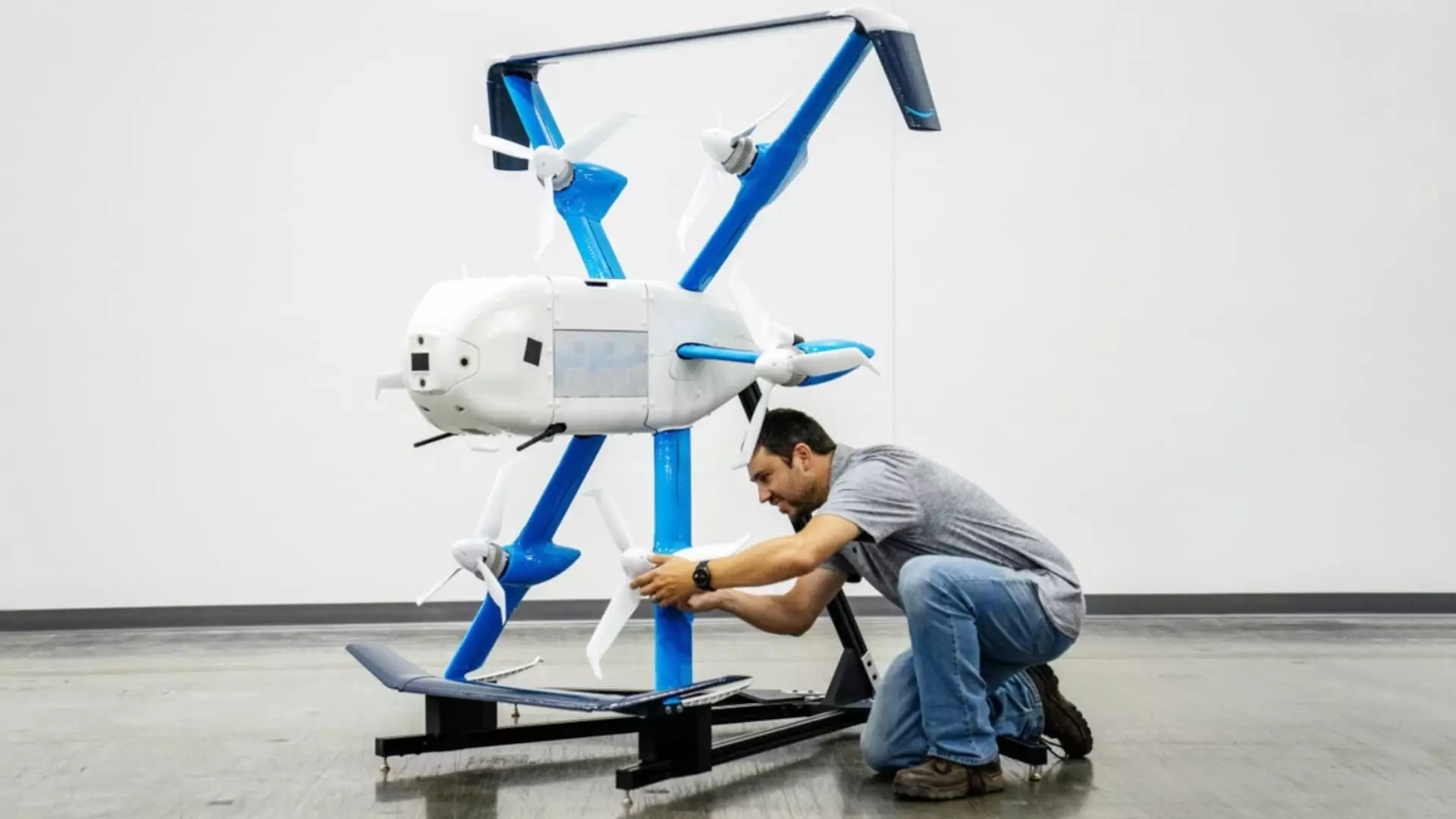On Tuesday, Amazon announced that it has received crucial regulatory approval to commence operations with its newly designed MK30 delivery drone. This model promises to revolutionize drone logistics with enhanced capabilities, including the ability to navigate light rain and an operational range that is double that of its predecessors. Introduced in November 2022, the MK30 is emblematic of Amazon’s ambition to innovate and streamline its delivery processes, taking the concept of aerial deliveries from mere speculation to practical application.
The approval from the Federal Aviation Administration (FAA) is a significant milestone, granting Amazon the green light to conduct deliveries beyond the visual line of sight of the drone pilots. Previously, a limited waiver had been given to Amazon’s Prime Air program for flights in narrow confines of College Station, Texas. This broadens Amazon’s operational geography and represents a critical step towards expansive drone usage in urban logistics.
In conjunction with this regulatory triumph, Amazon has commenced its drone delivery operations in Tolleson, Arizona, close to one of their logistics hubs. This move indicates a restructuring of strategic operations following the closure of a test site in California’s Lockeford. The intention behind this shift is not merely to test the latest drone technology but to integrate these aerial delivery systems into Amazon’s vast existing logistics network, thereby enhancing efficiency and reducing delivery times.
The FAA’s approval for conducting beyond visual line-of-sight deliveries in Tolleson, effective October 31, further facilitates Amazon’s aspirations for expansive drone operations. This integration of drones into logistical frameworks could signify a transformative shift in last-mile delivery systems, aiming for rapid fulfillment in an increasingly competitive marketplace.
Despite these promising developments, Amazon’s drone delivery saga has not been without its trials. Originating over a decade ago, when Jeff Bezos first articulated his visionary plans, the Prime Air program has wrestled with significant regulatory challenges, shifting deadlines, and even workforce reductions. Under the leadership of CEO Andy Jassy, who has instituted widespread cost-cutting measures, the program faced a series of setbacks, including the departure of key leadership figures. These factors have combined to stall the momentum which was initially envisioned for Amazon’s aerial division.
The introduction of David Carbon, a former Boeing executive, as head of the drone operation is a notable response to the internal turmoil. His leadership comes at a critical juncture for the initiative, as the company aims to revitalize its drone program and address operational deficiencies.
Adding layers of complexity to Amazon’s efforts, the program has not been welcomed without dissent. Residents of College Station raised concerns about noise pollution, which resulted in interventions from local officials who communicated their grievances directly to the FAA. In response, Amazon pledged to identify a new site for drone delivery operations by October 2025, indicating an awareness of the need for community engagement and responsiveness to public concerns.
This kind of local resistance underscores the delicate balance that tech companies must strike when pioneering disruptive technologies. Engaging with communities, addressing concerns, and ensuring that innovations do not infringe upon the quality of life for residents are imperative for sustained operational success.
Notably, Amazon is not alone in its quest to harness drone technology for logistics. It faces stiff competition from various companies, including Wing, a subsidiary of Alphabet, and logistics giants like UPS and Walmart. Additionally, a myriad of startups like Zipline and Matternet are also vying for a stake in the rapidly evolving drone delivery market. The competitive dynamics of this space require Amazon to continually innovate while managing public relations and adherence to regulatory standards.
While Amazon’s recent FAA approval marks a significant advancement in its drone delivery aspirations, the road ahead is fraught with challenges. Balancing community concerns, addressing operational inefficiencies, and navigating a competitive landscape will be critical for the success of the Prime Air program. As technology continues to evolve, the integration of drones into delivery systems may indeed redefine logistics in a post-pandemic world, provided Amazon can adeptly manage these multifaceted challenges.


Leave a Reply